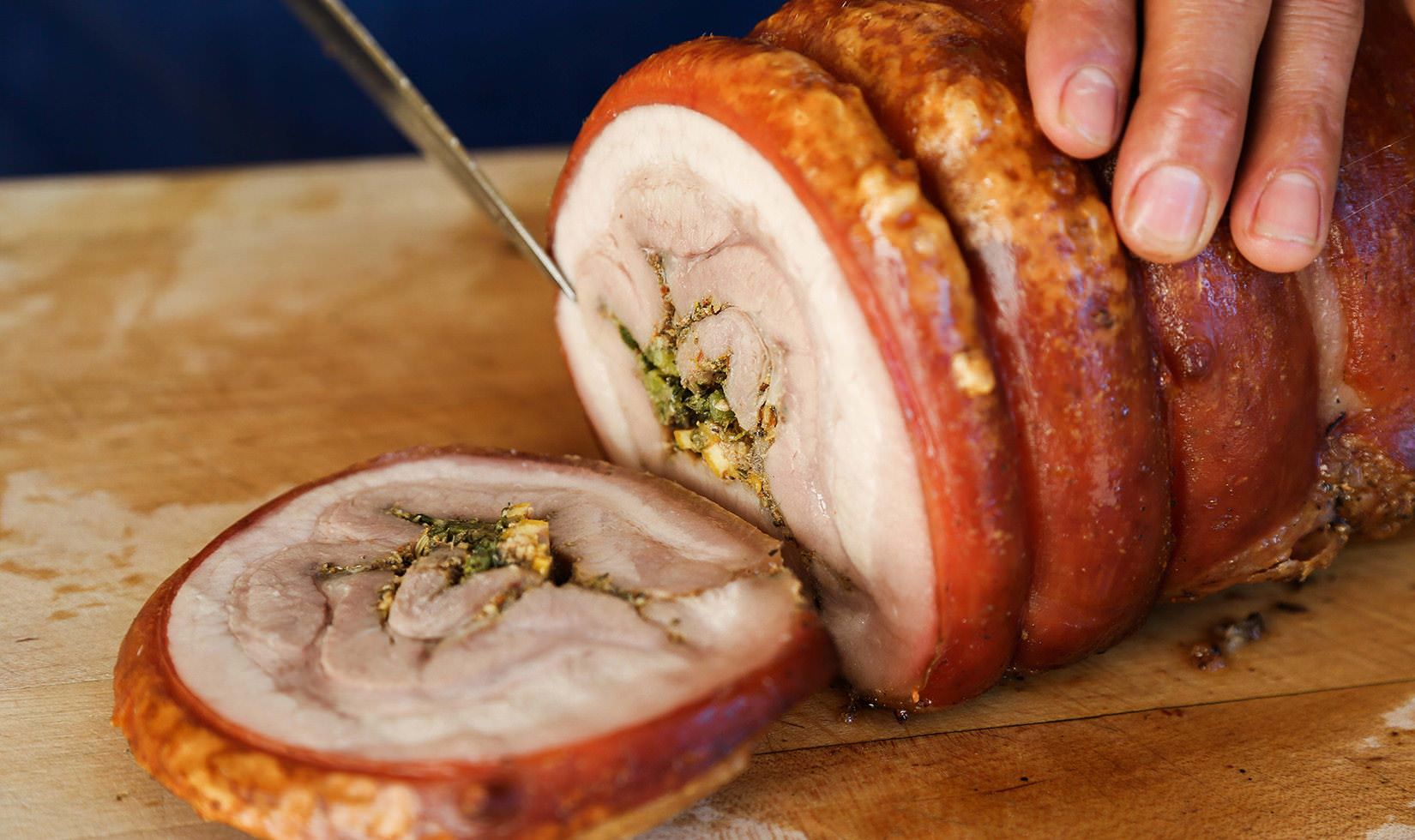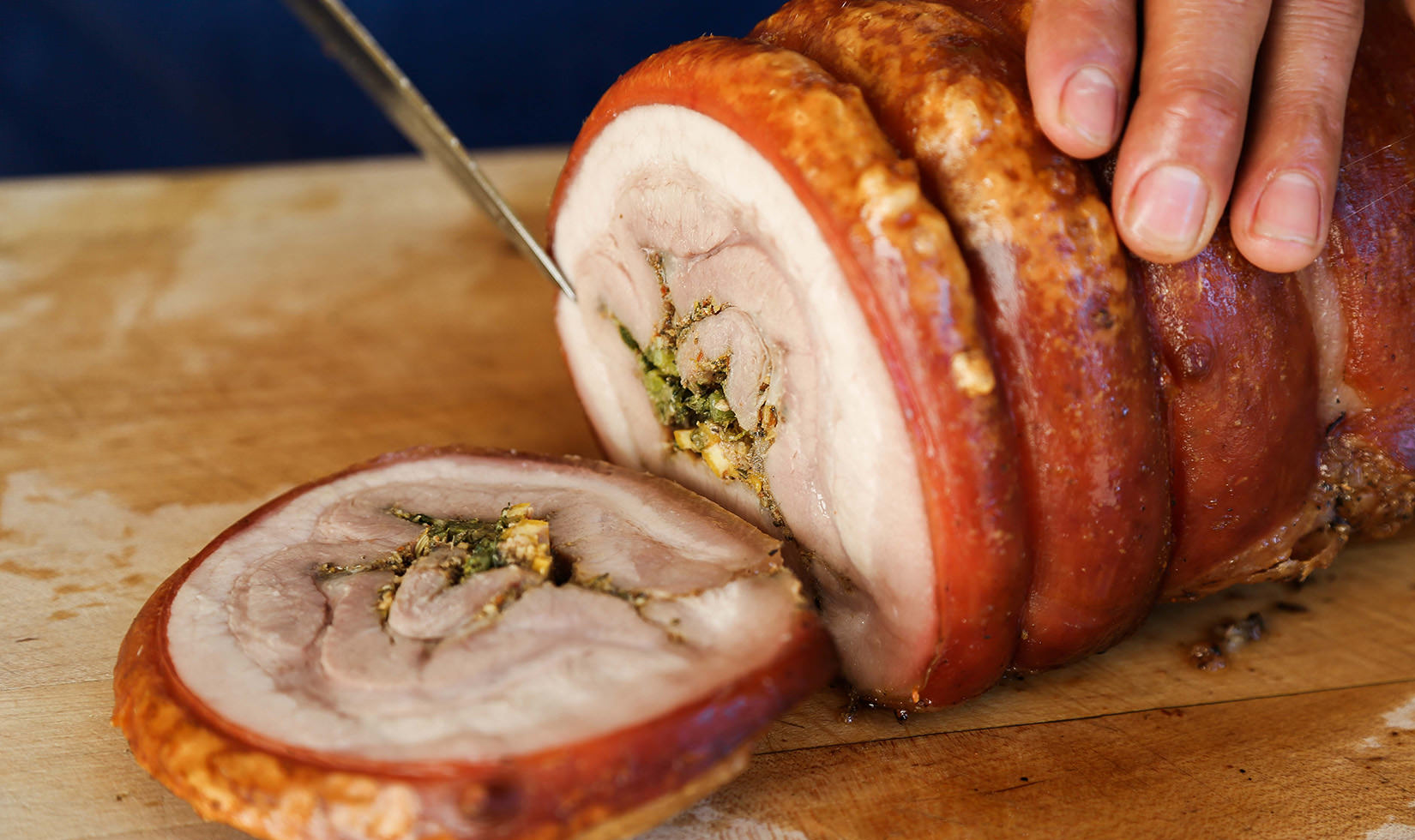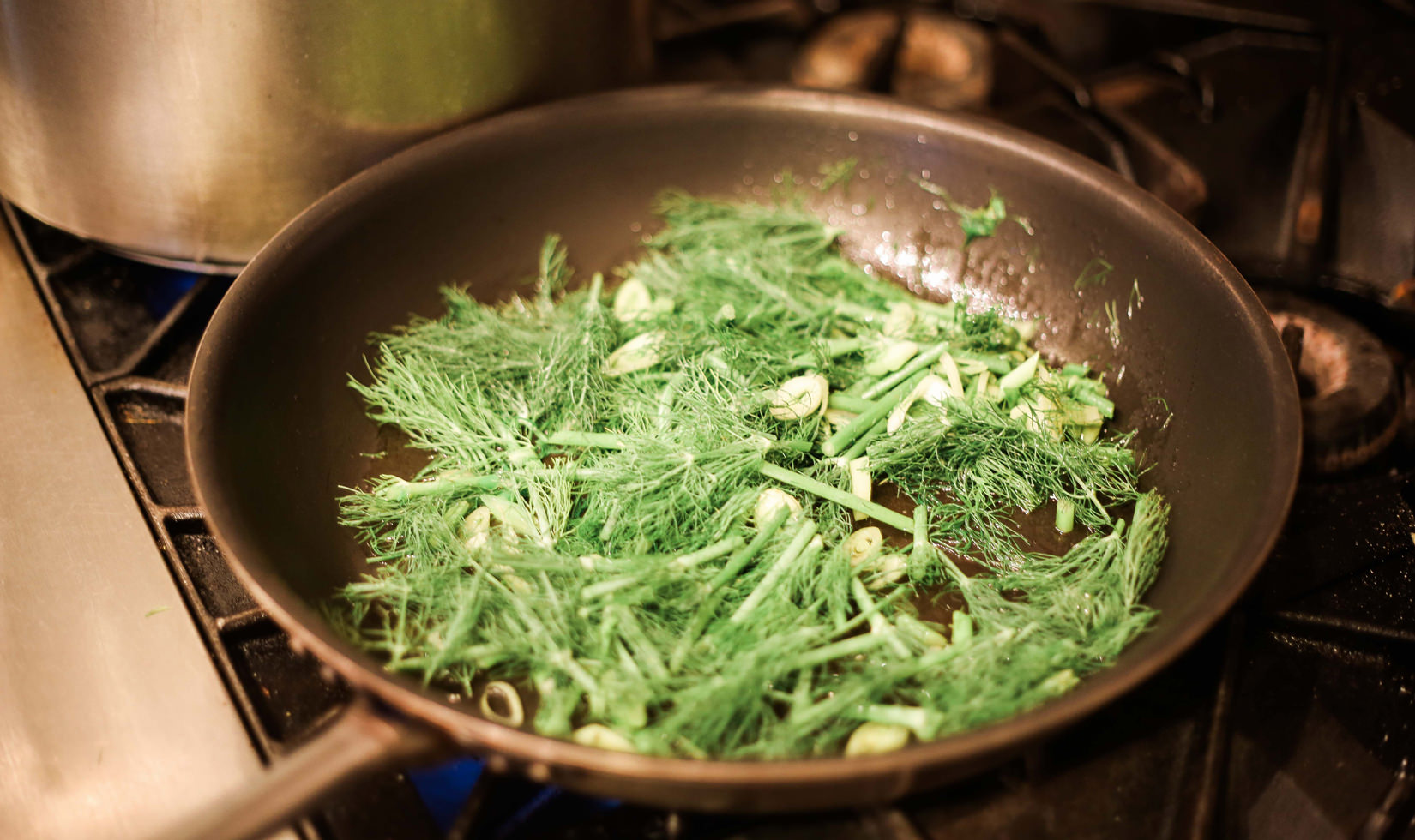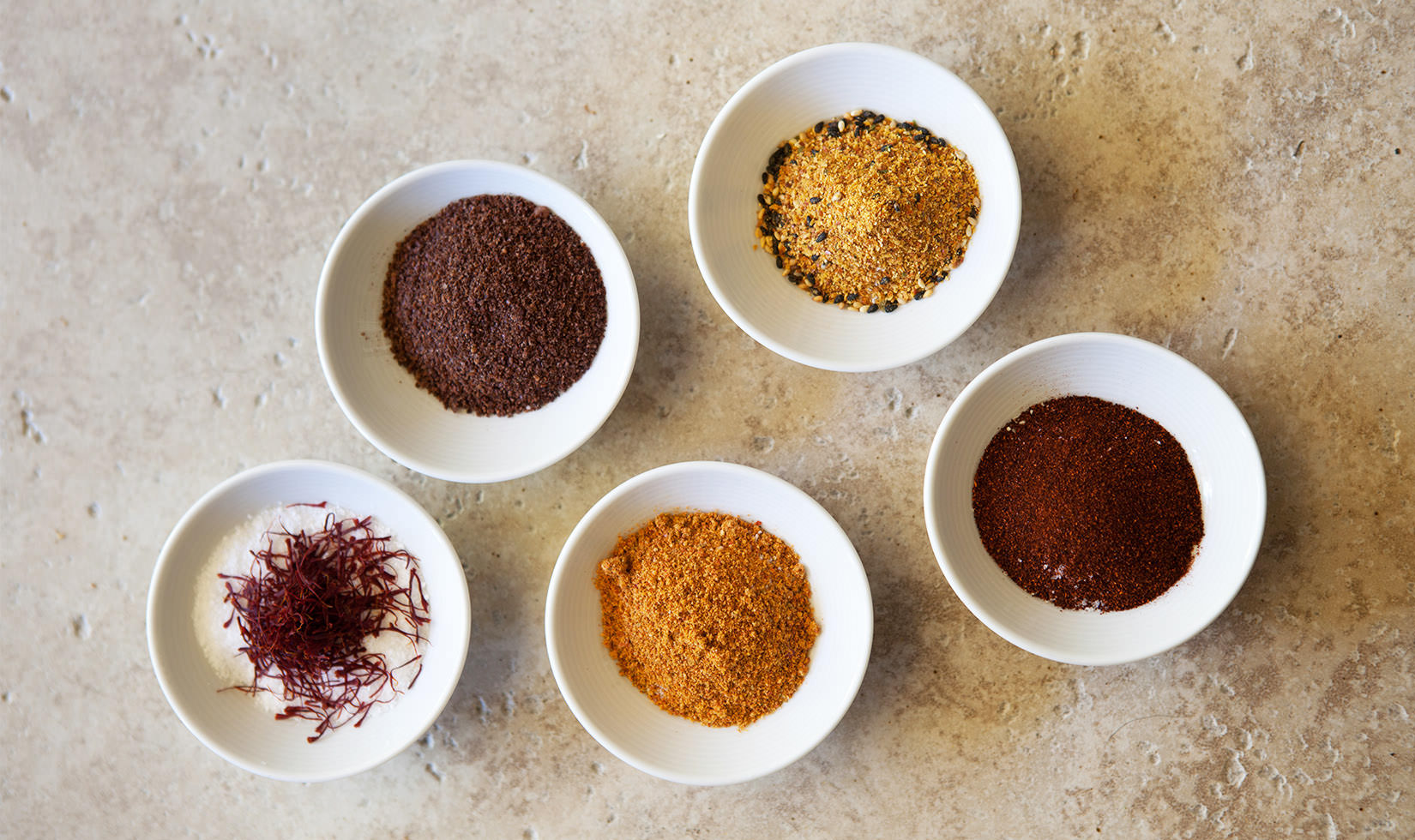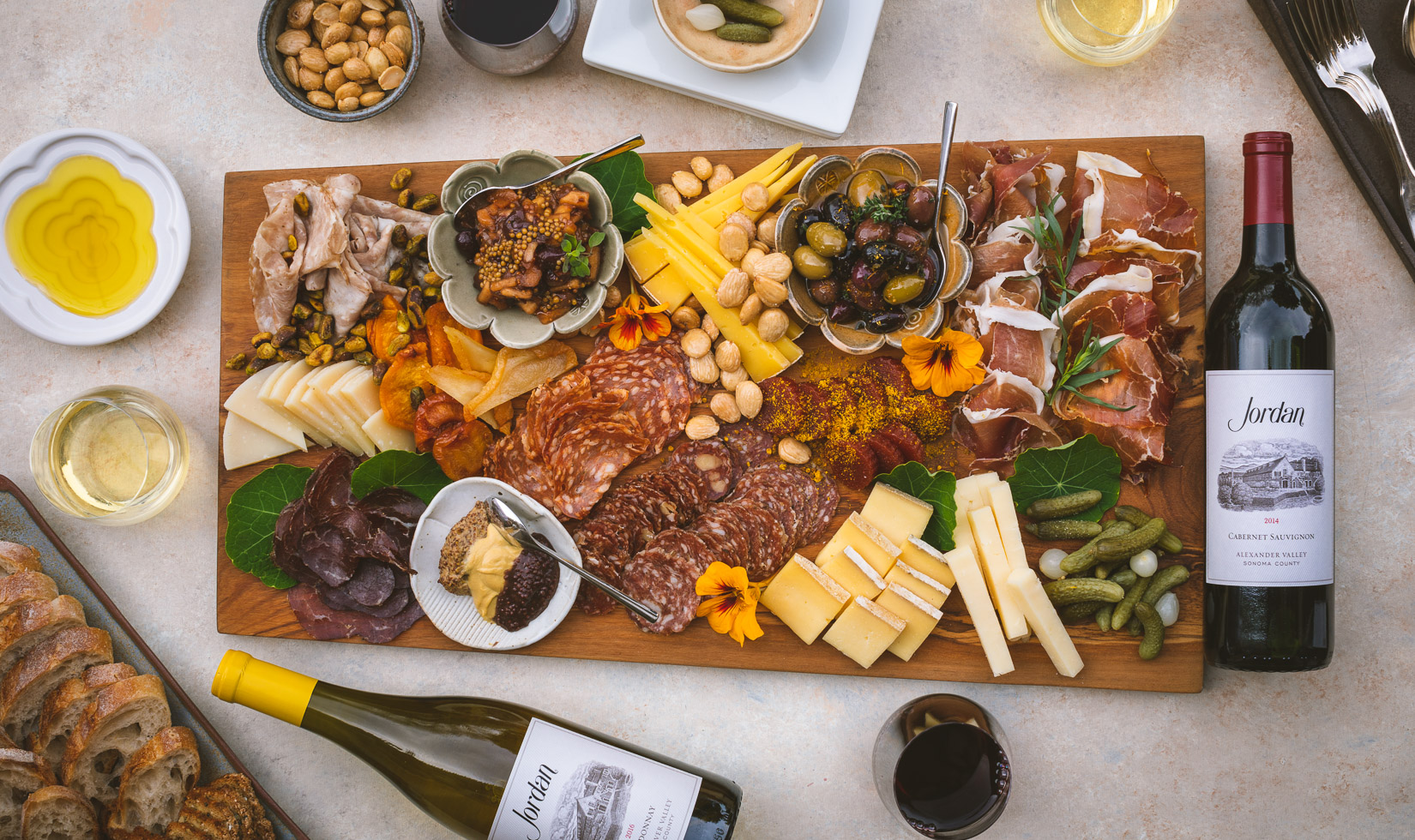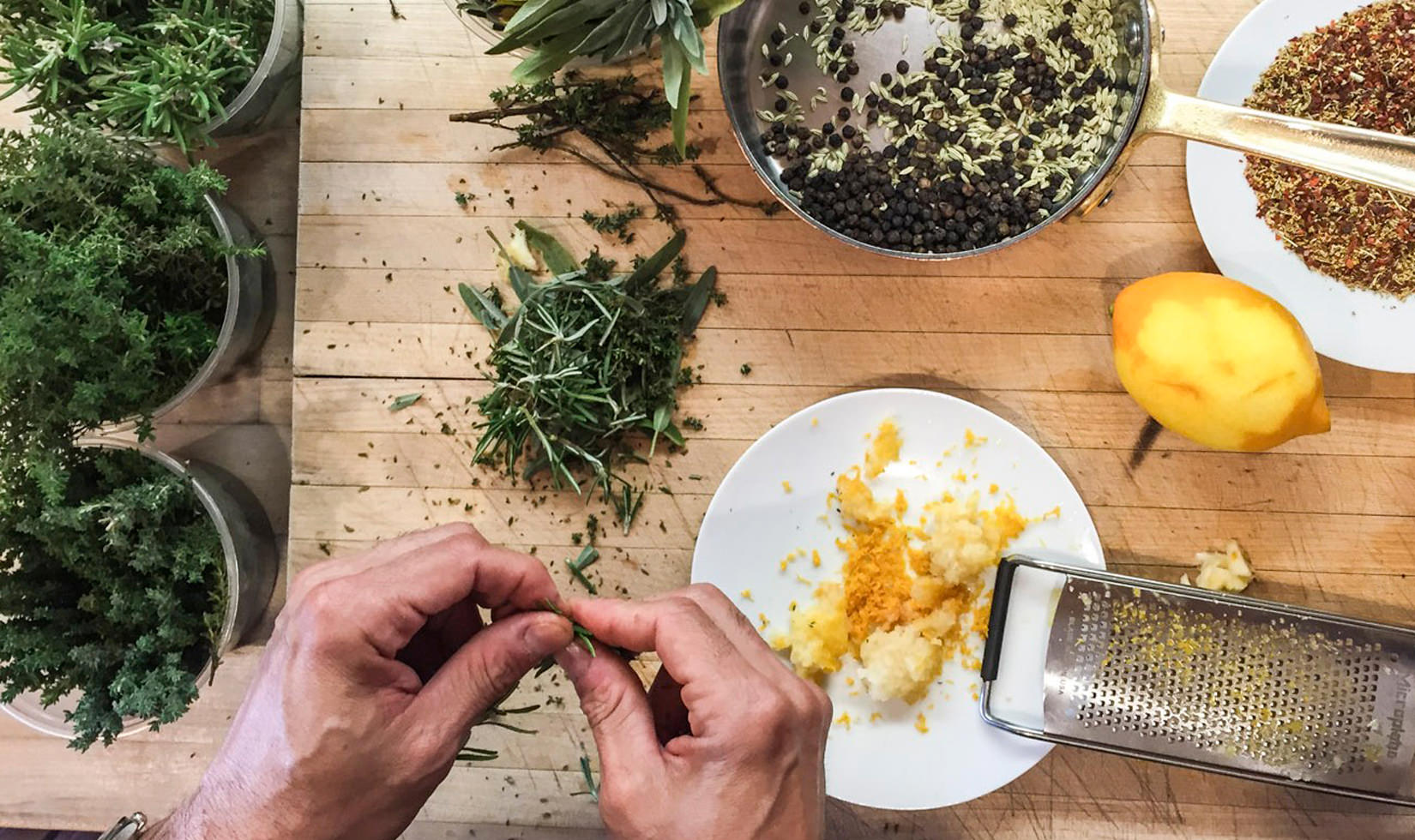Looking for an easy, delicious recipe for your family dinner party for the holidays or dinner parties year-round? Use my photo tutorial for a step-by-step demonstration on how to make herb-roasted pork belly. Herb-roasted pork belly made in the Italian porchetta tradition (boneless pork roast with savory herbs) is a festive dinner party entrée that is simple to prepare in advance, and its fresh herbs and spices complement the earthy notes in Bordeaux blends like Jordan Cabernet Sauvignon. If you don’t have the time or patience for marinating and roasting, Creminelli Fine Meats offers its four-pound holiday porchetta roast online for $90, which can be shipped to your home.
View Recipe: Herb Roasted Pork Belly Porchetta
How to Make Herb Roasted Pork Belly Porchetta: Step-by-Step Instructions
Step 1: Complete mis en place (chopping herbs, zesting garlic and lemons).
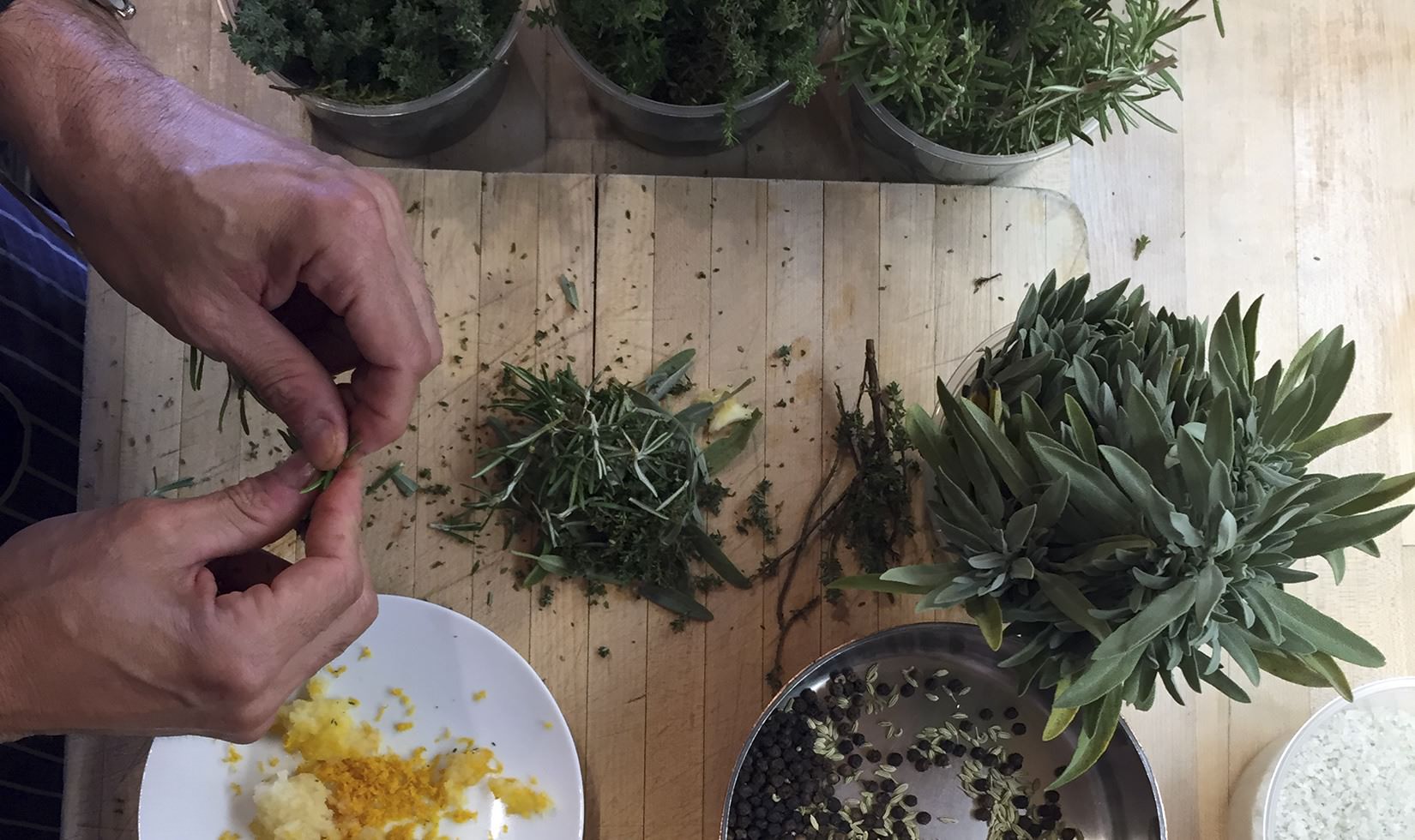
Step 2: To make the rub, toast peppercorns and fennel seed in a small pan over medium heat (about 3 minutes).
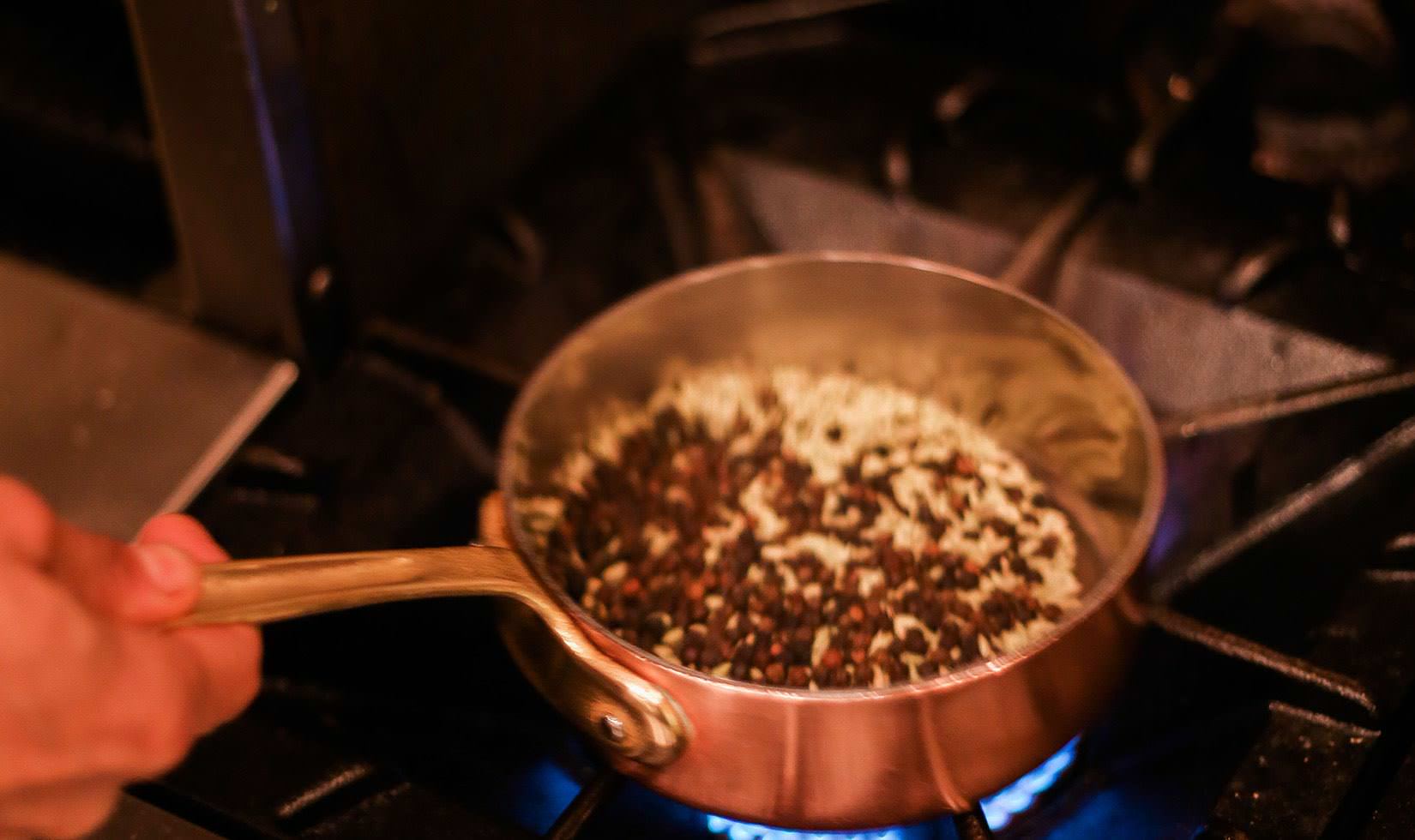
Step 3: Place toasted peppercorns and fennel seed in a grinder and pulse until fully ground, or grind by hand with a mortar and pestle.
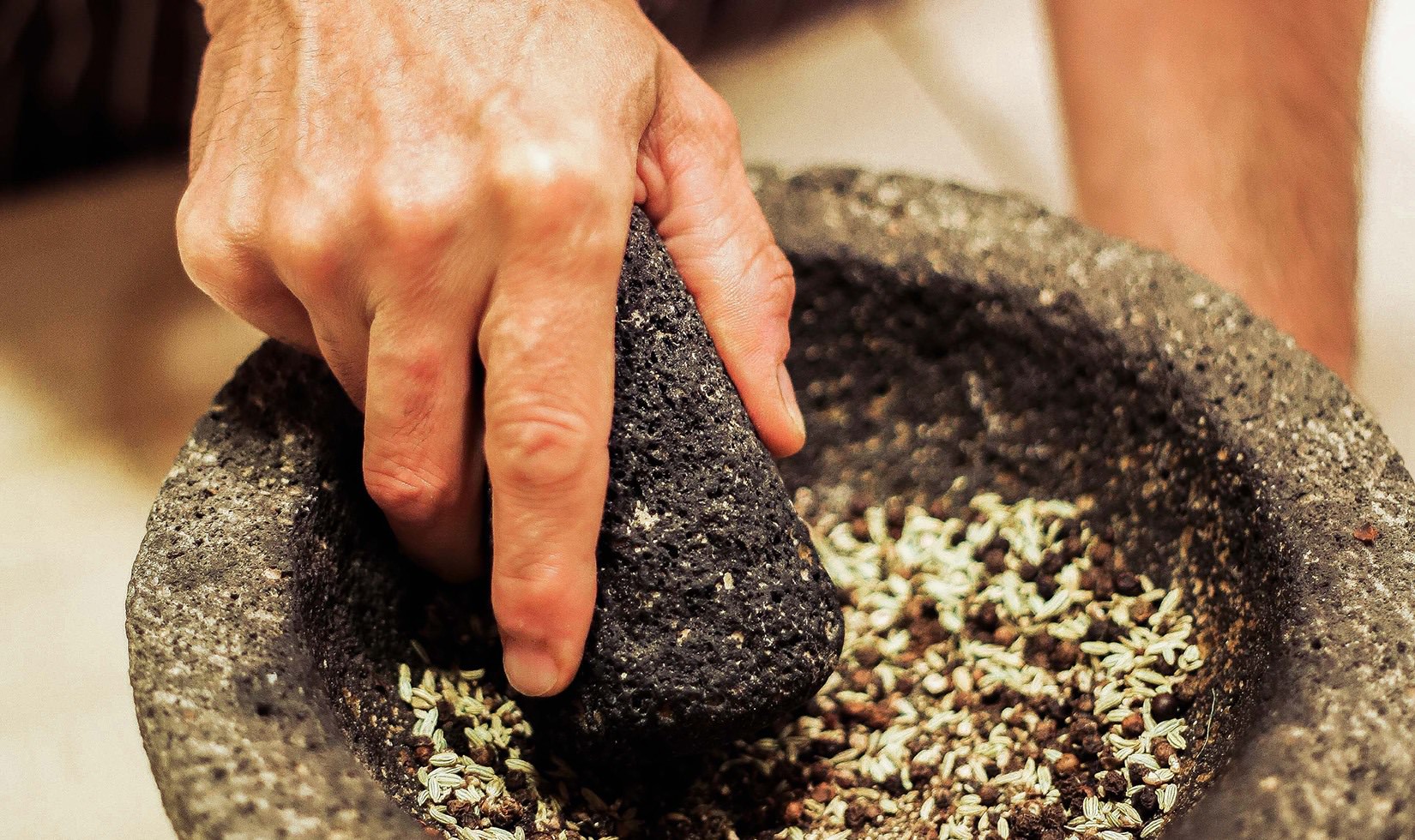
Step 4: In a small bowl, combine ground spices with Aleppo pepper, fresh herbs, garlic paste and lemon zest. Set rub aside or refrigerate for up to 3 days.
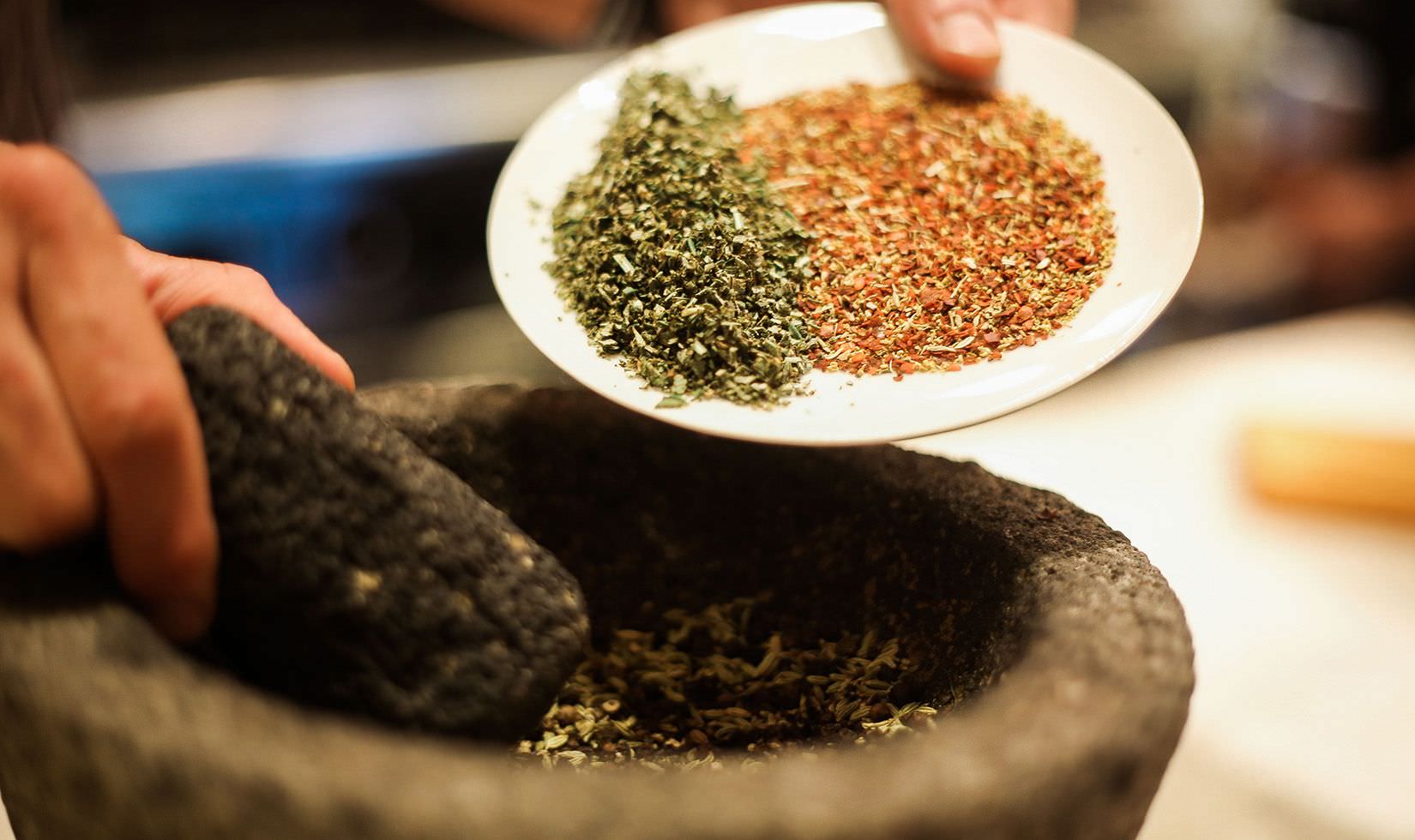
Step 5: Place the pork skin-side up on a large cutting board. Tenderize the pork by “docking” or piercing the skin multiple times (full coverage) with a skin perforator tool. This will speed crisping and render excess fat.
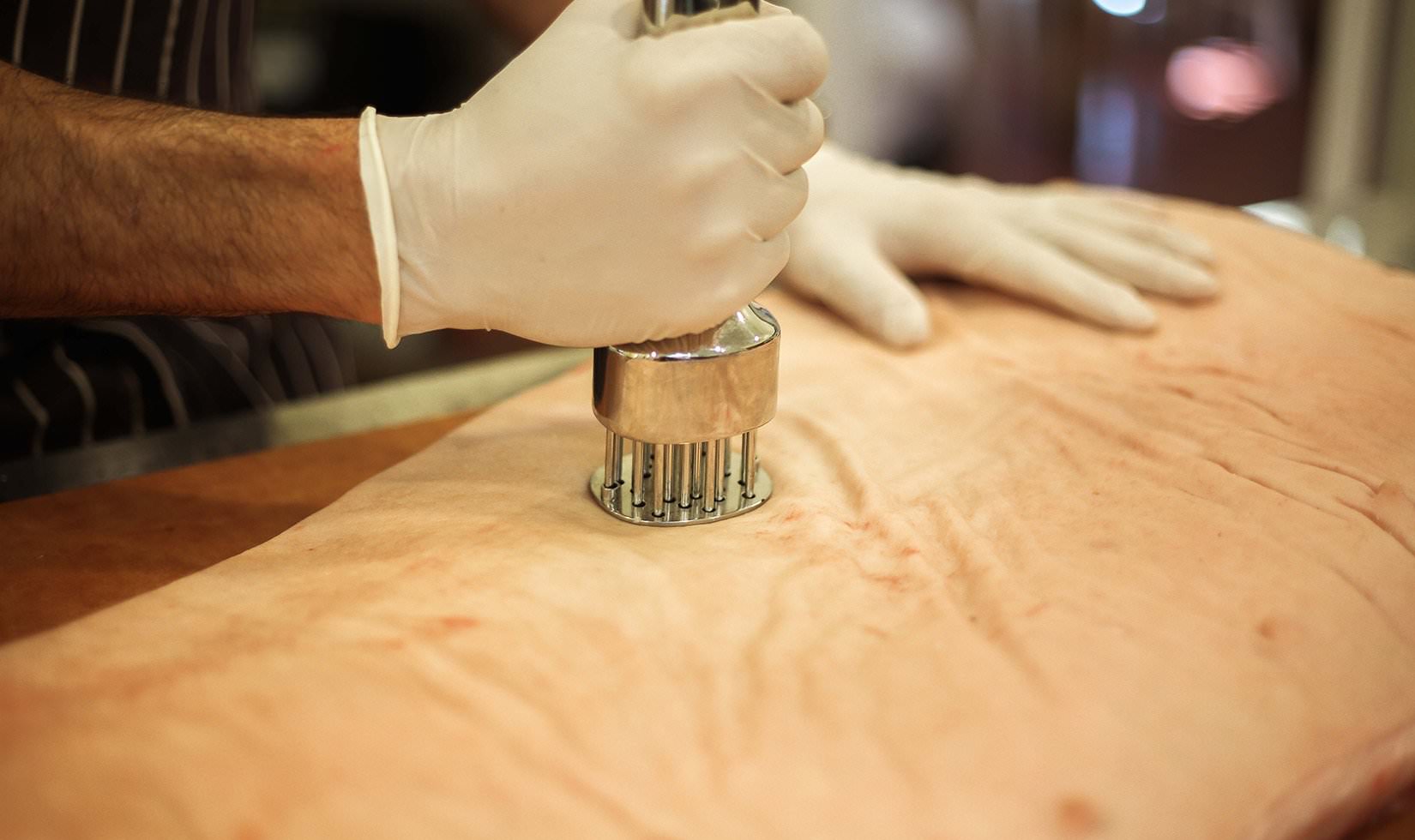
Step 6: Cover skin-side with ¼ cup salt.
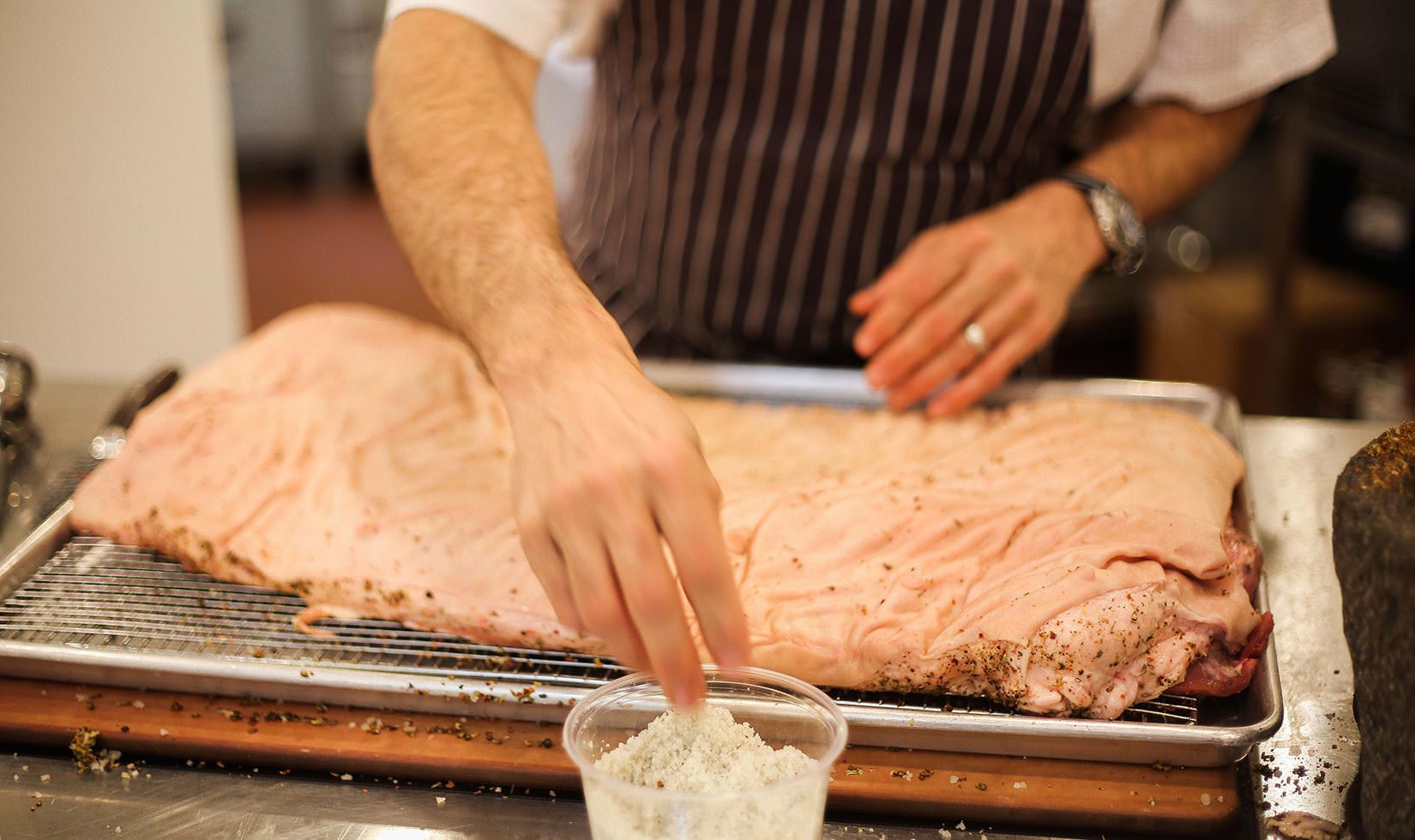
Step 7: Flip the pork over and score the meat-side diagonally, so it cooks evenly.
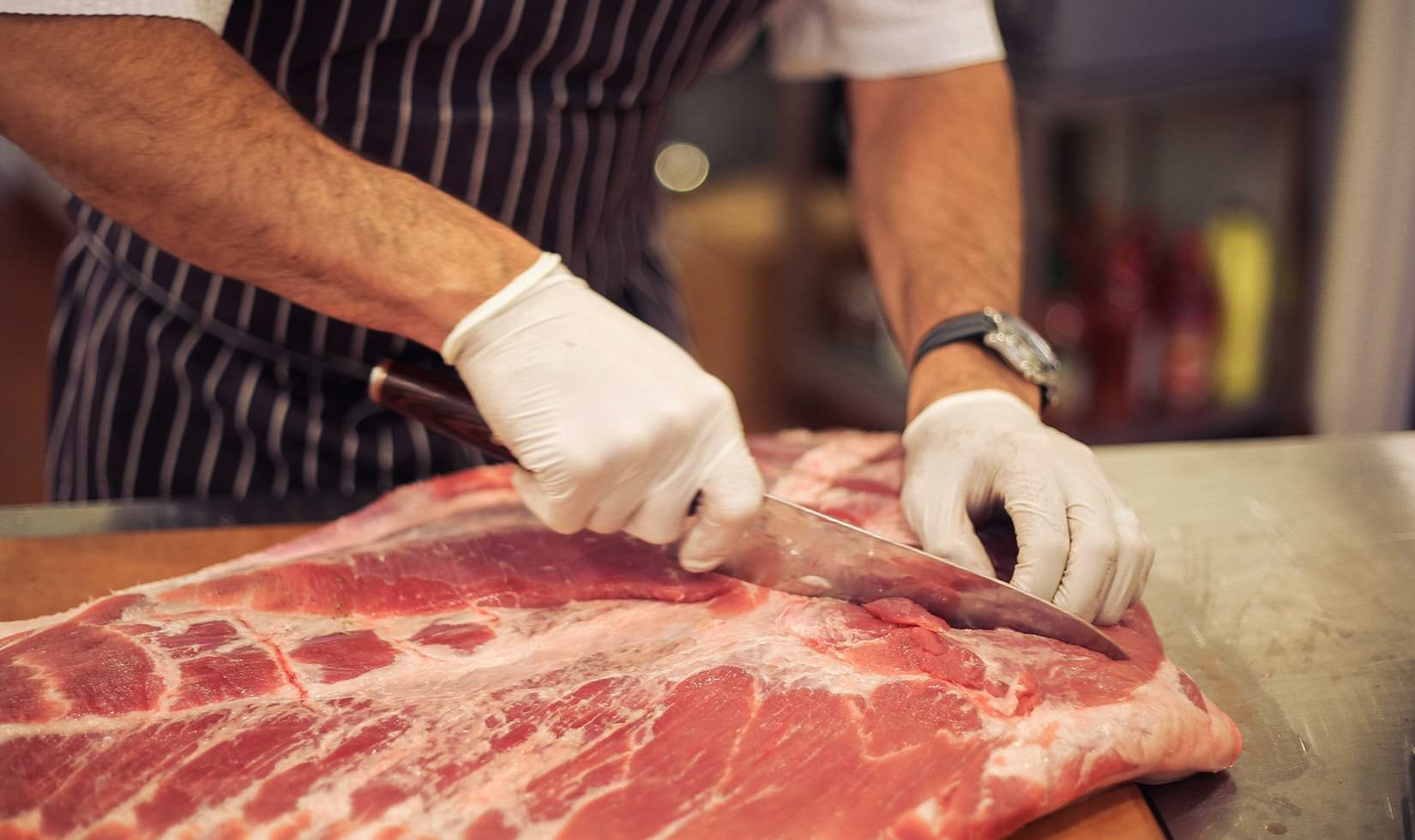
Step 8: Cover the meat-side with ¼ cup salt.
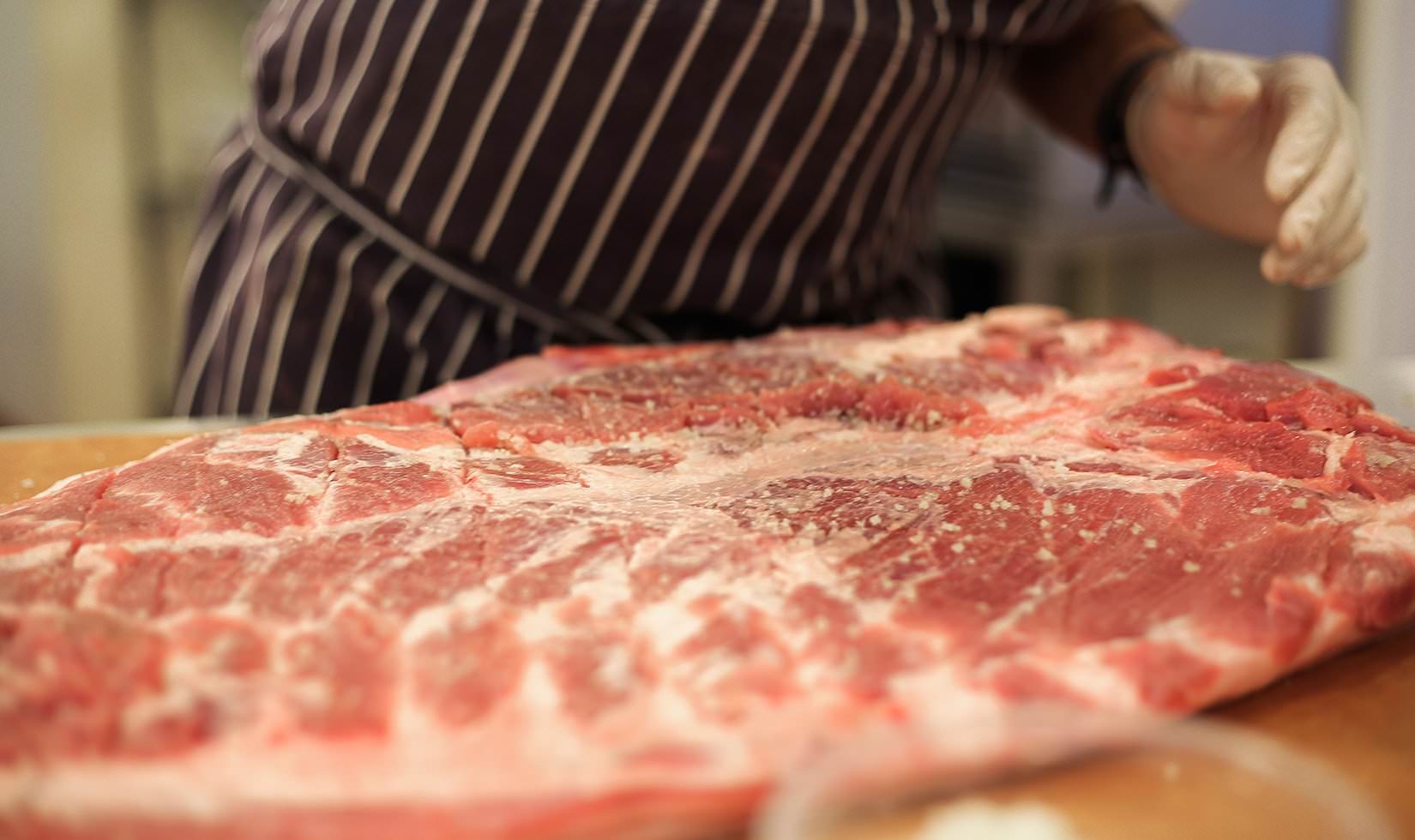
Step 9: Sprinkle and pat the rub on the meat-side of the pork belly.
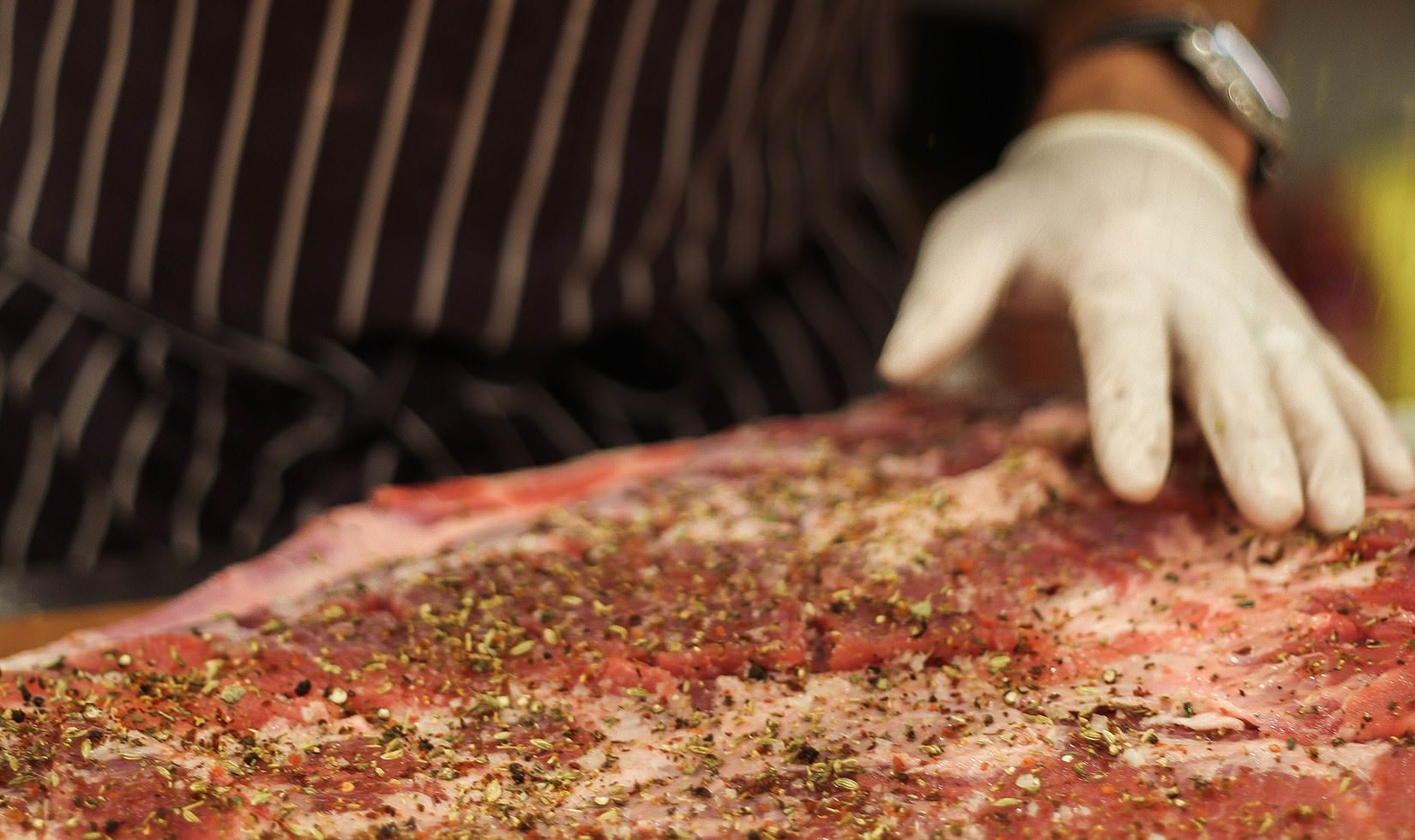
Step 10: Place the meat skin-side up on a cooking grate or roasting rack and set the rack in a roasting pan or baking sheet. Marinate overnight in a refrigerator to lightly cure the meat.
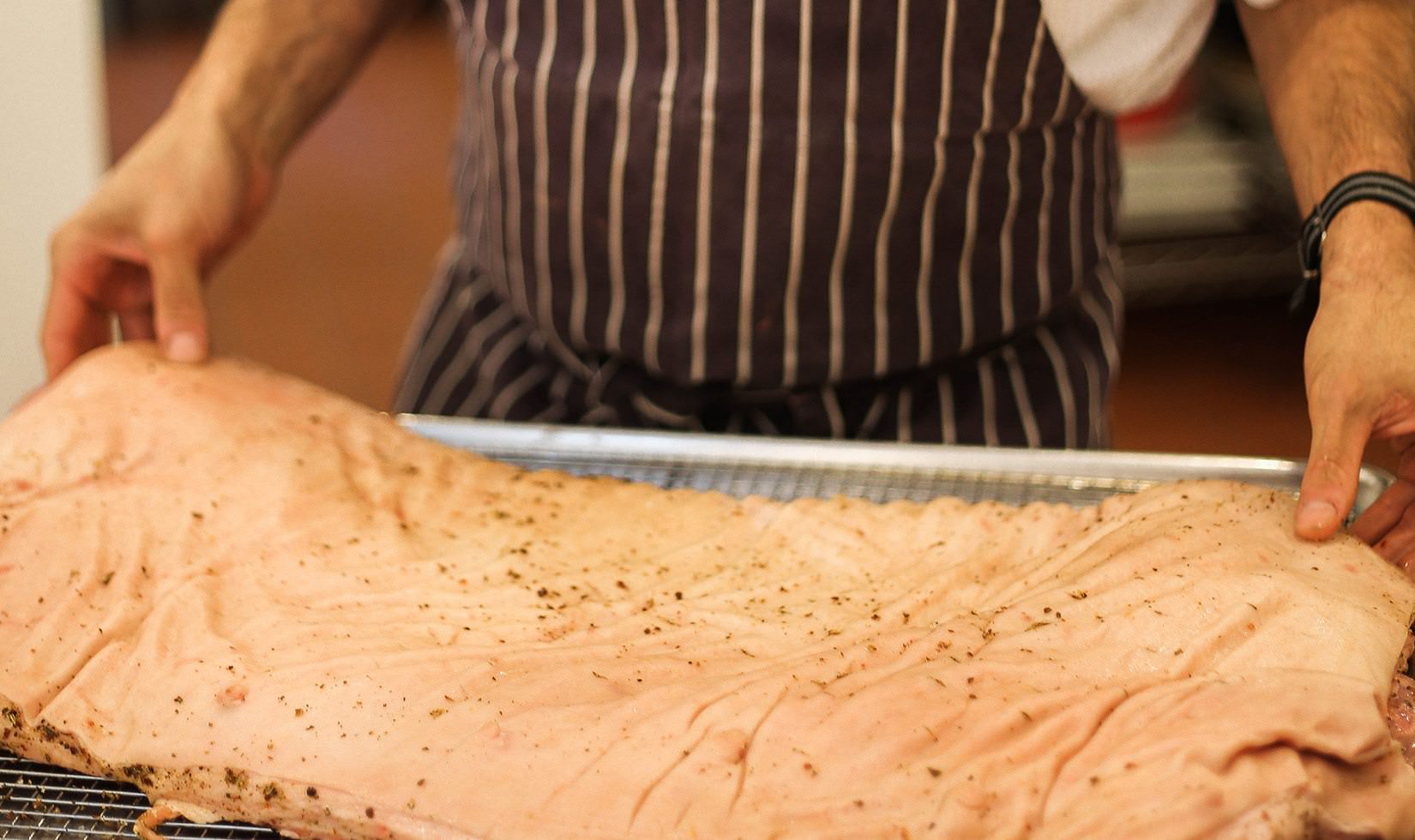
Step 11: To prepare the stuffing, chop fresh herbs and shallots. (Stuffing can be modified according to your taste; sauteed herbs with Picholine olives or dried fruits and chopped nuts are other favorites.)
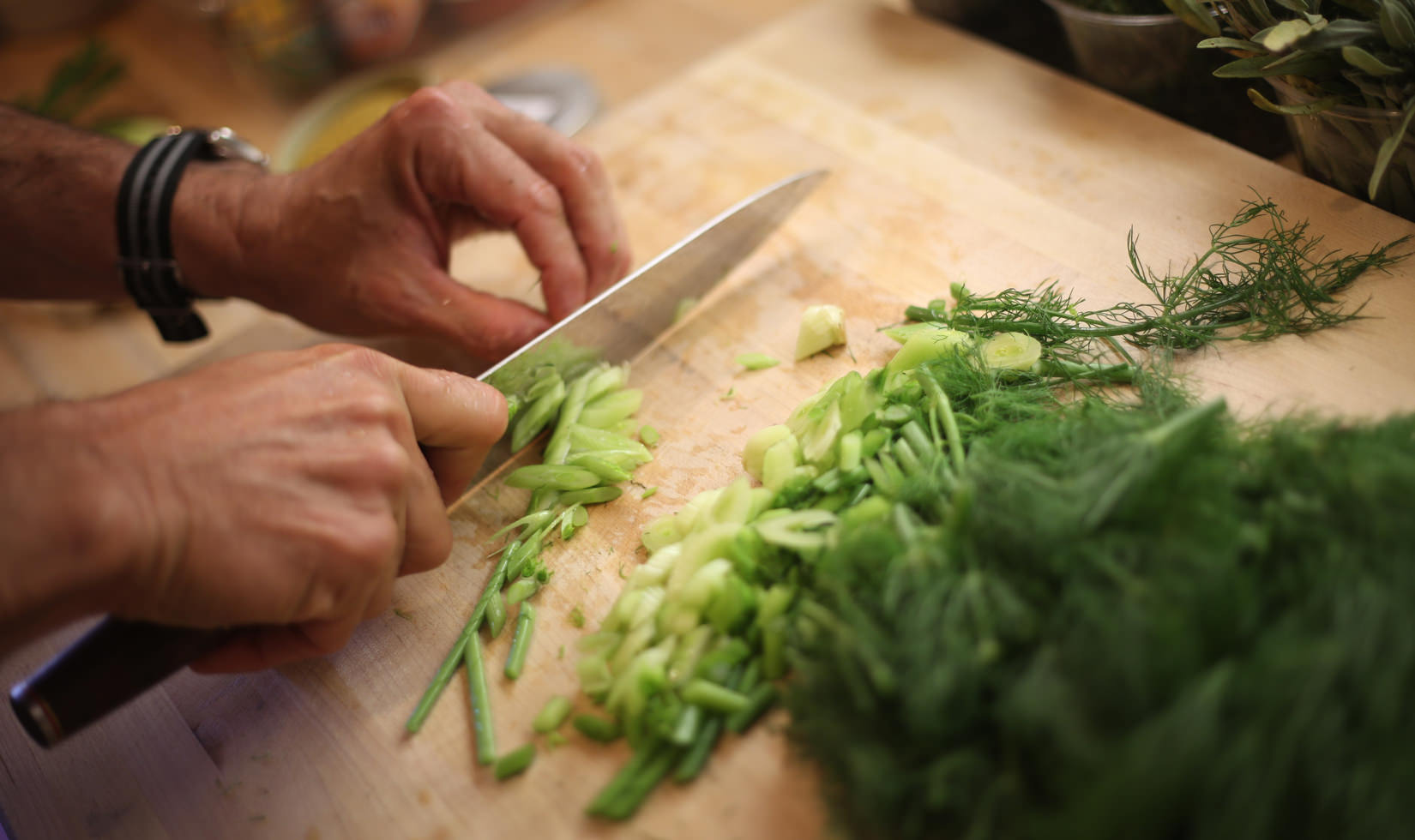
Step 13: Slice lemons thinly.
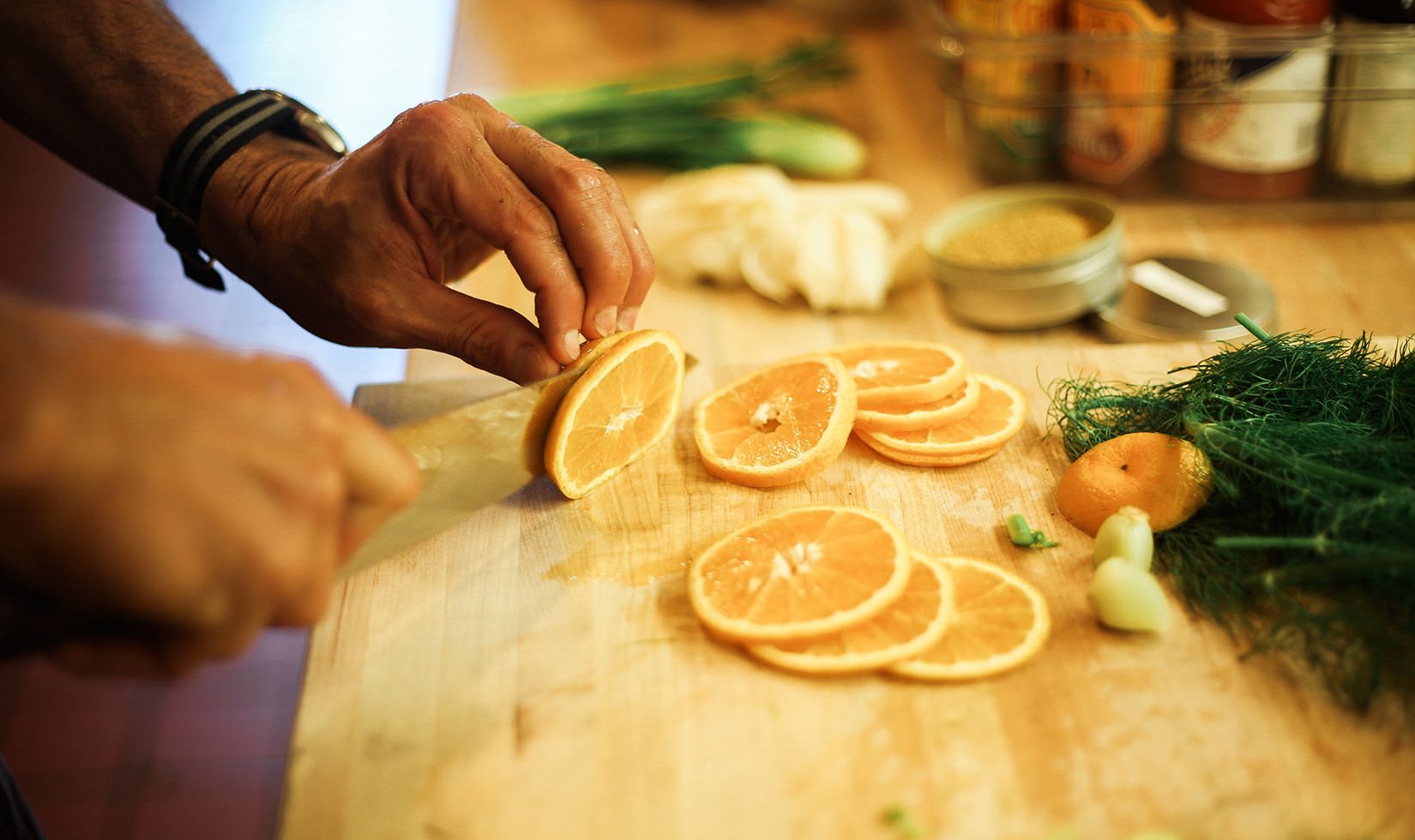
Step 14: Saute herbs, shallots and fennel pollen in Jordan Estate Extra Virgin Olive Oil over medium heat until fragrant; about two minutes. Let stuffing cool before use.
Step 15: After curing overnight, place pork belly on a cutting board and pat dry of any moisture. Add stuffing of sauteed aromatics and fresh sliced lemons to the center of the meat-side.
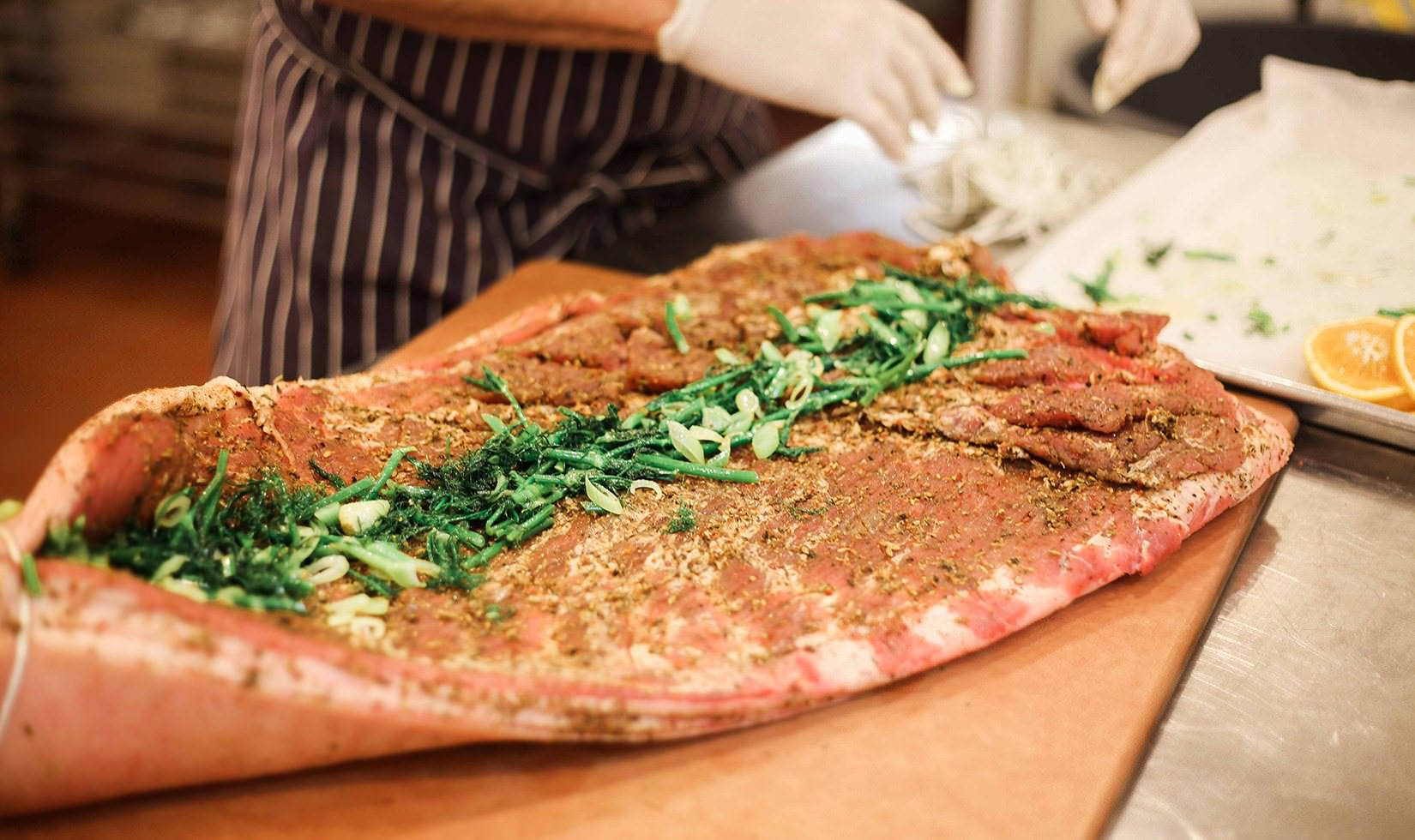
Step 16: Roll the meat tightly from the short end into a compact roast shape.
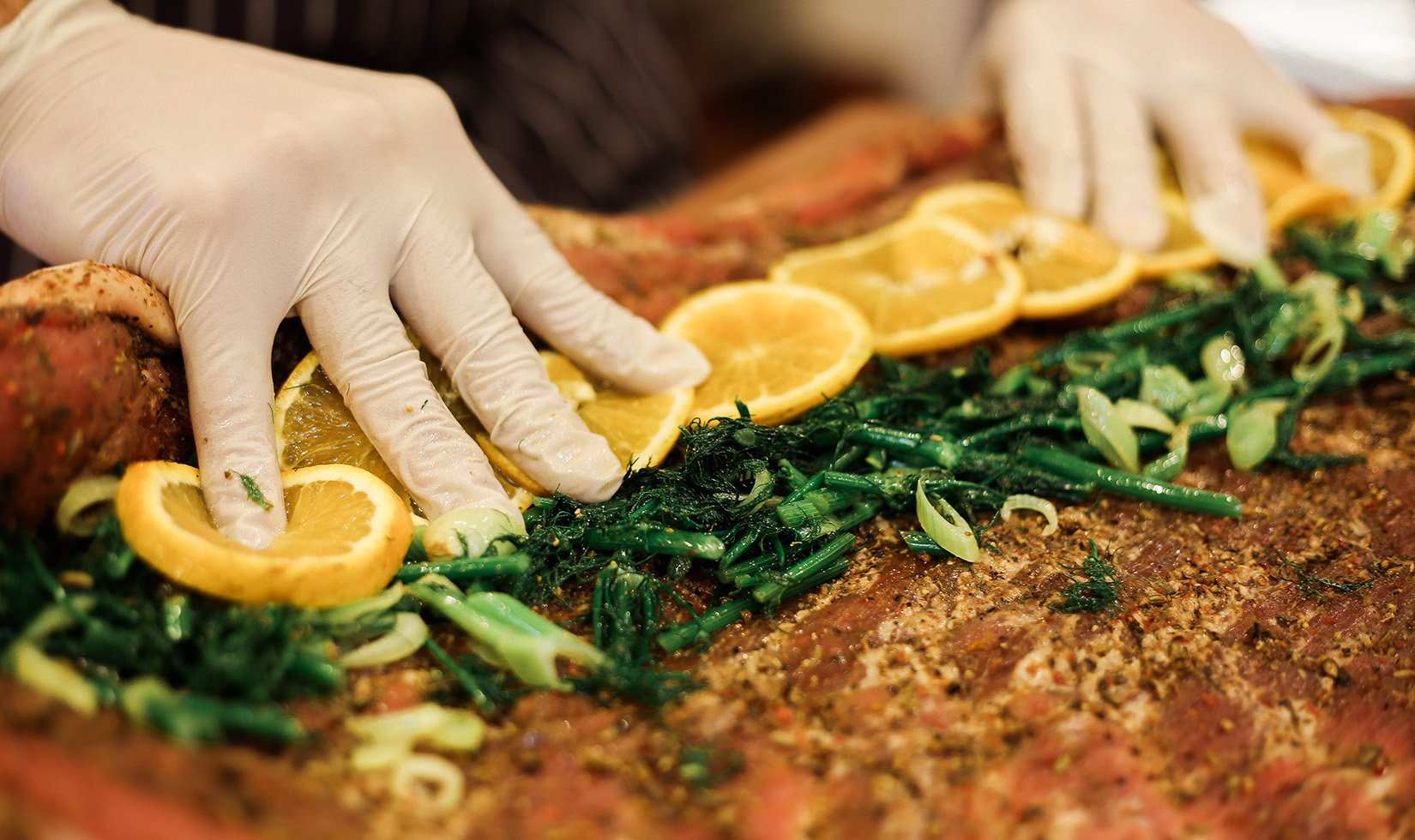
Step 17: Place pieces of cooking twine (each about 20 inches in length) three inches apart on a cutting board or work surface.
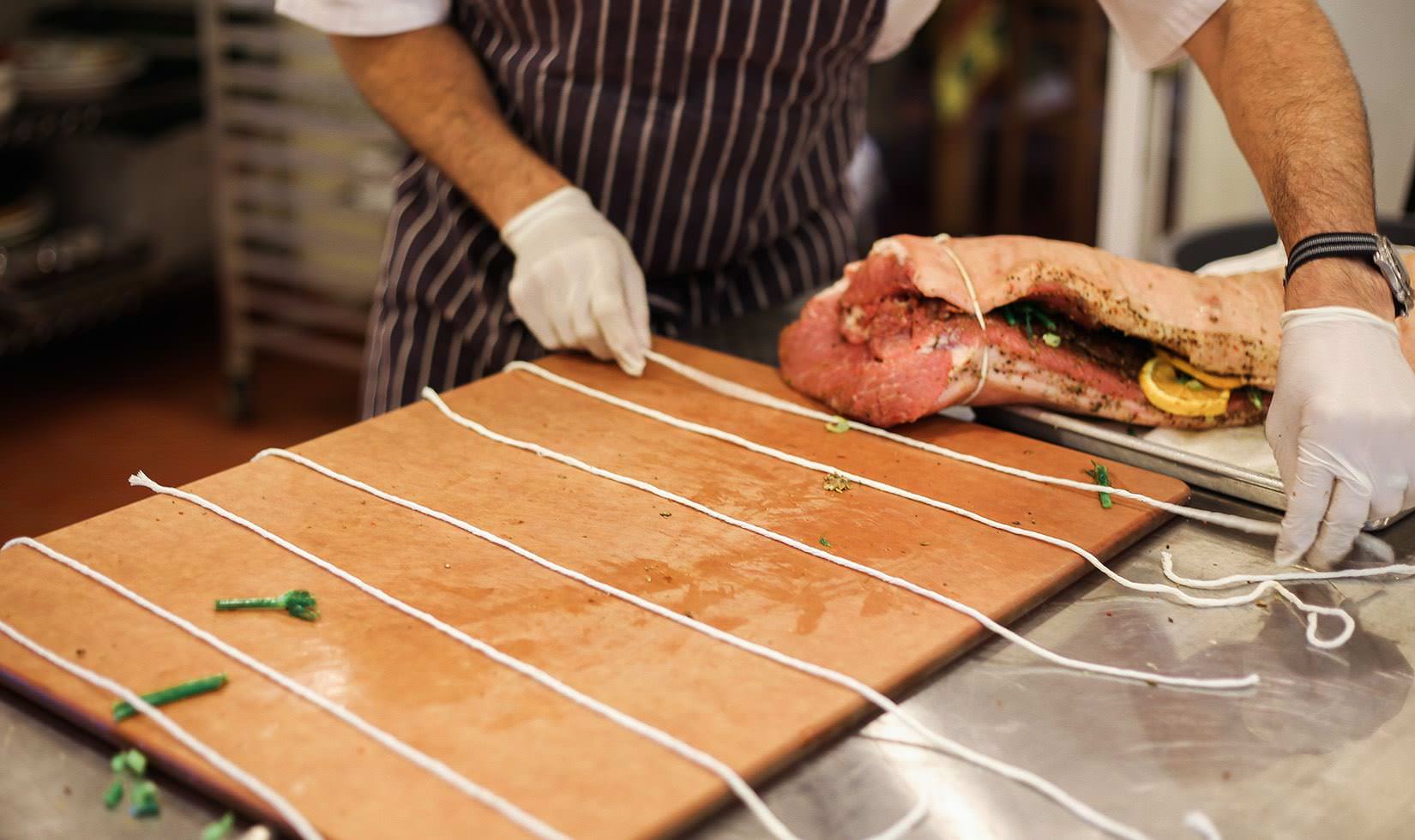
Step 18: Tie cooking twine around the roast at 3-inch intervals.
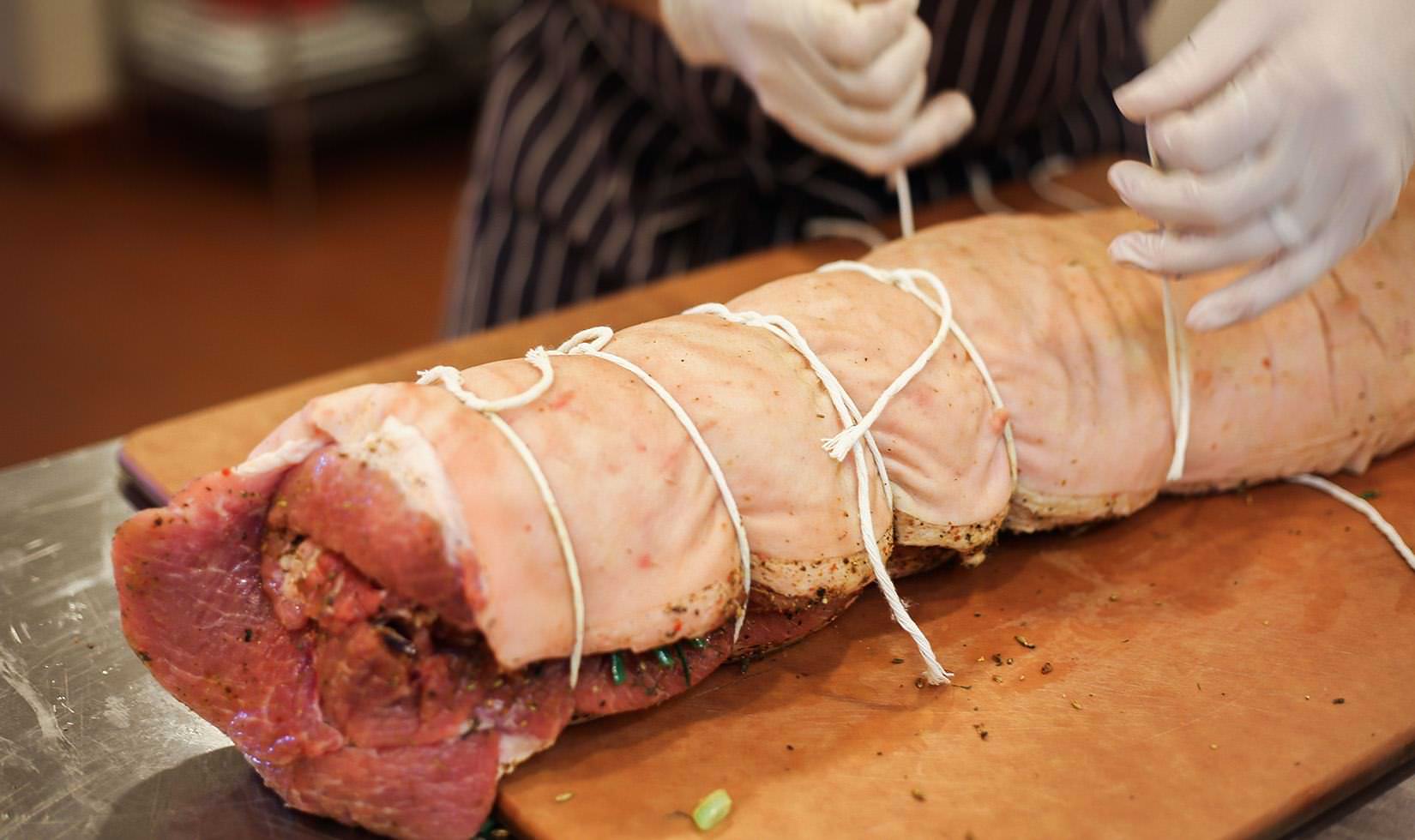
Step 19: At this point, the roast may be prepared immediately, rested in the refrigerator for a minimum of 24 hours to further enhance flavor or may be frozen for up to three months. To freeze, wrap in aluminum foil and then seal with 1-2 layers of plastic wrap to prevent freezer burn. Once ready to cook, allow frozen pork to thaw overnight under refrigeration. For all preparations, allow the meat to come to room temperature for one hour prior to roasting.
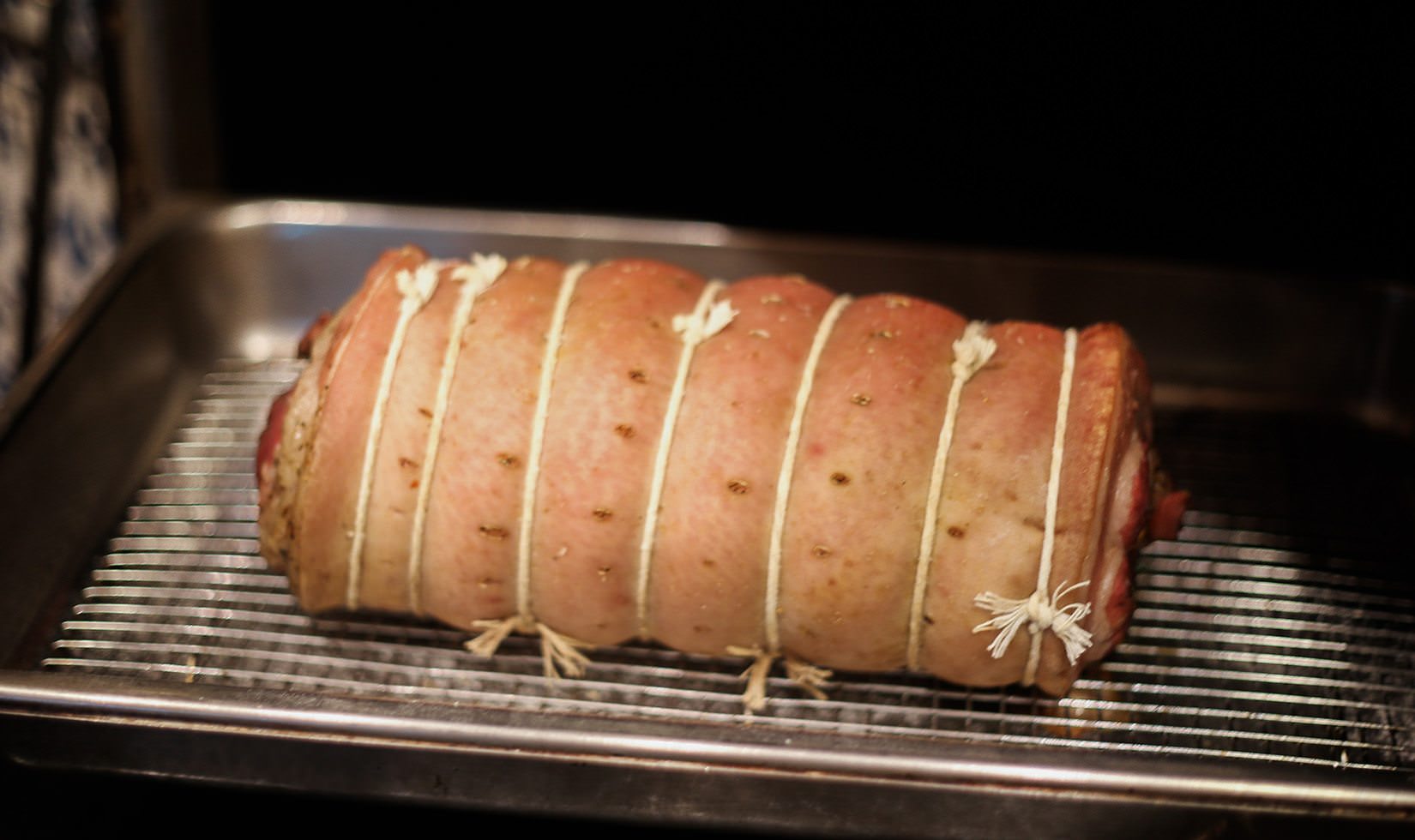
Step 20: Roast at 325 degrees for approximately 2.5-3 hours to an internal temperature of 160 degrees. (This is important or the belly will not be tender.)
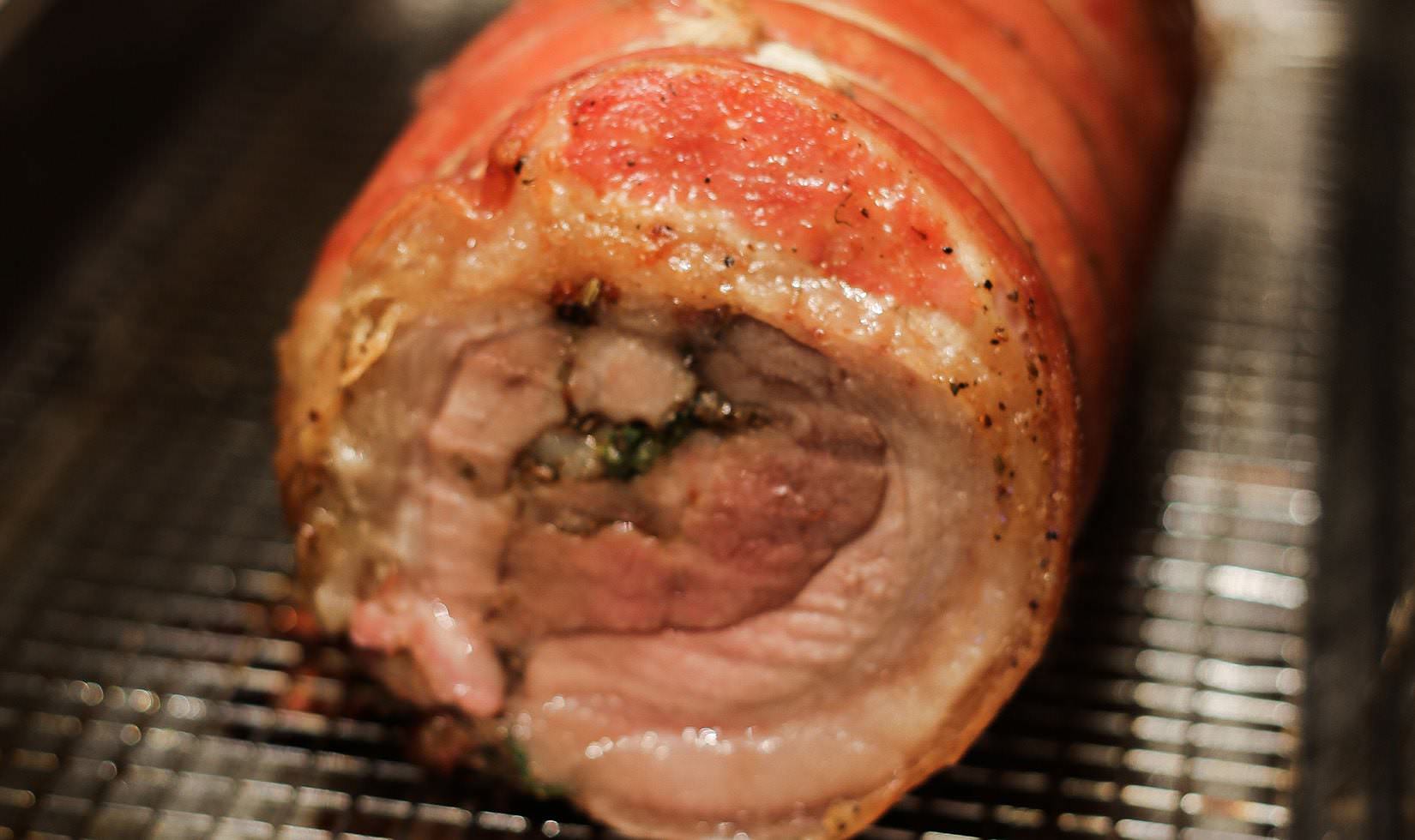
Step 21: Allow the meat to rest for 30 minutes at room temperature, then remove cooking twine prior to slicing.
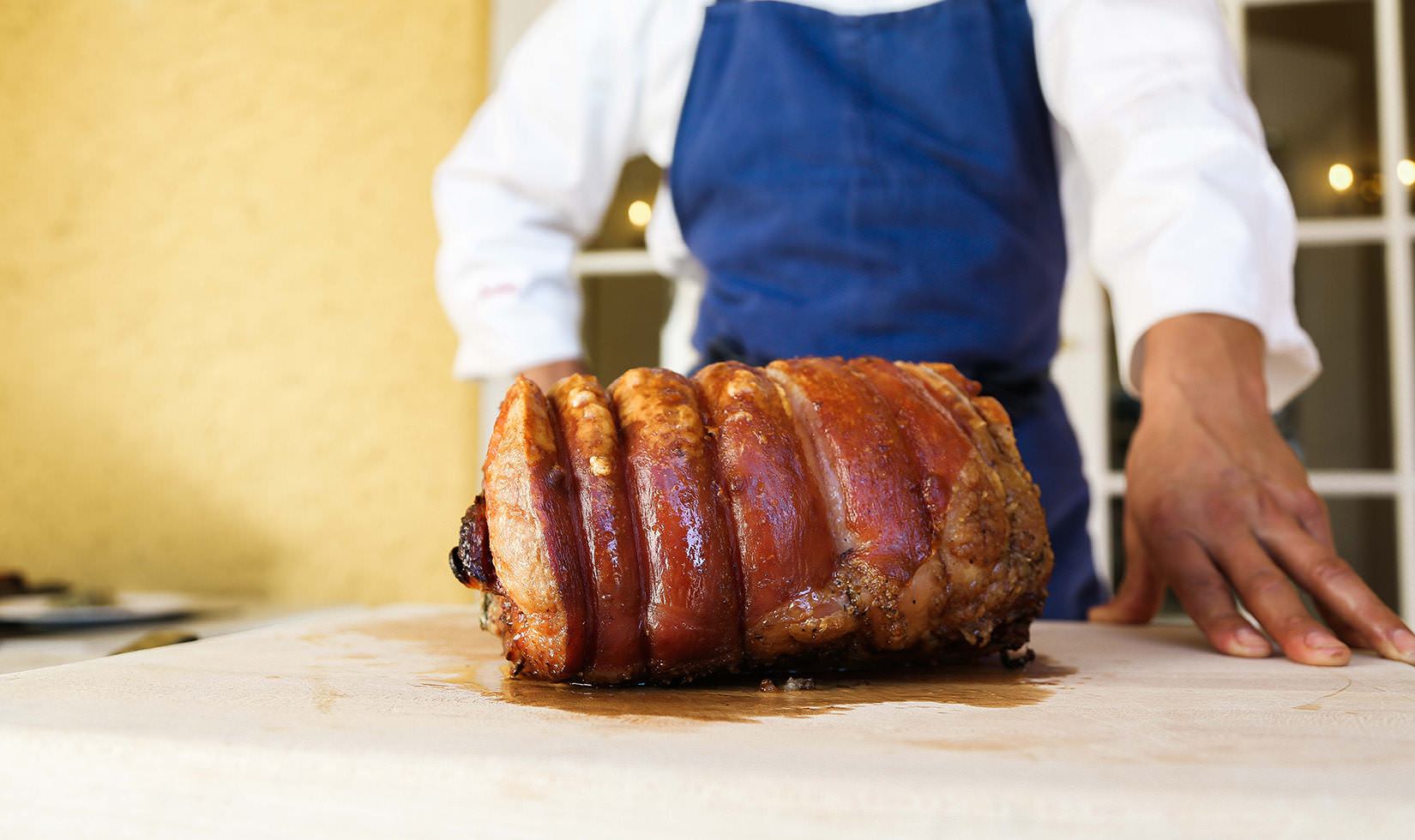
Final Step: Slice and serve with steamed vegetables. Leftovers are fantastic for sandwiches; crisp meat in a cast iron pan and place on grilled country bread with your choice of condiments.
